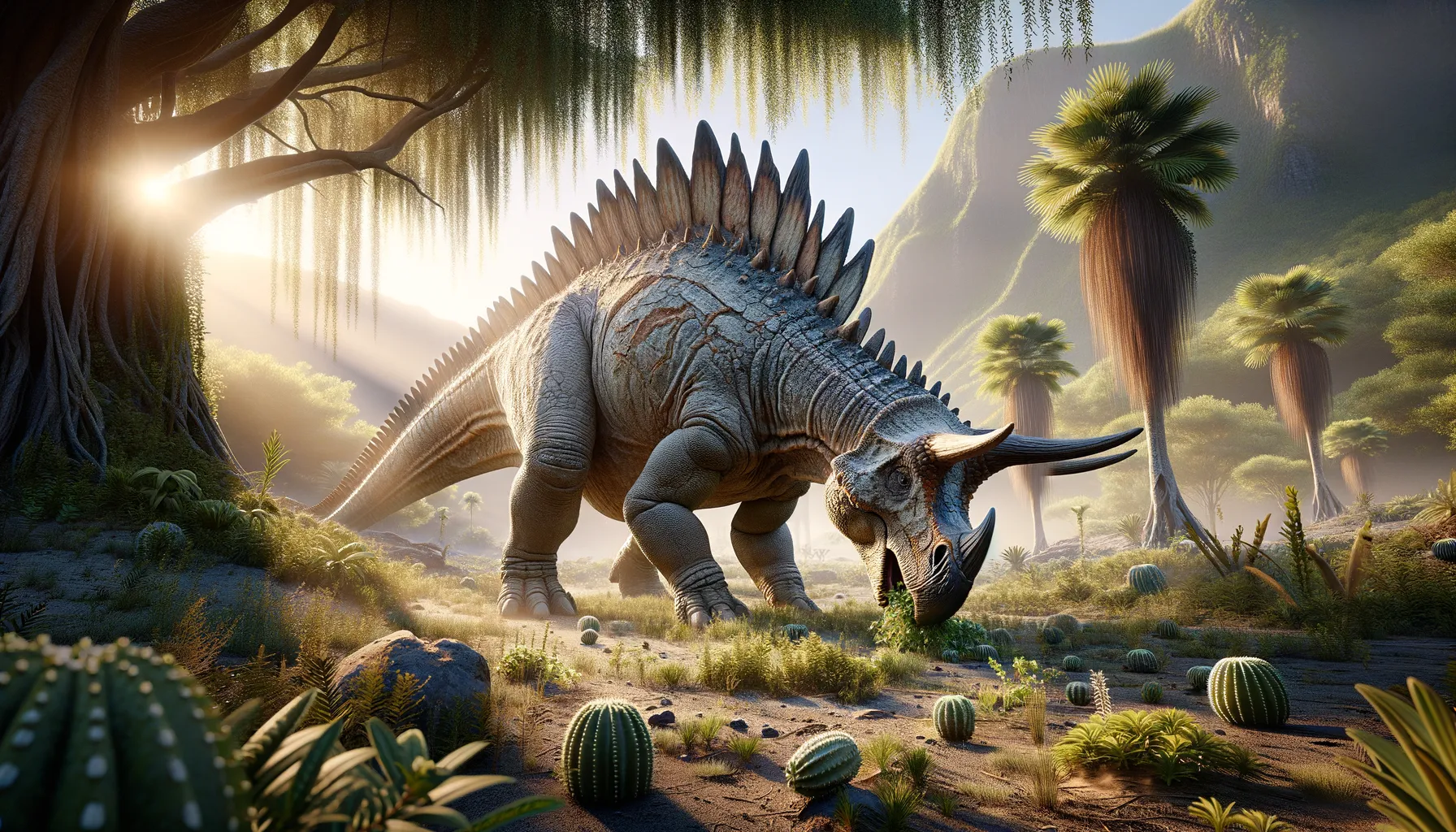
Glyptodontopelta
Armored resilience from a bygone era.
Period
Cretaceous
Length
Around 5 meters in length.
Height
About 1.5 meters tall.
Weight
Approximately 3 tons.
Glyptodontopelta, an armored dinosaur from the Late Cretaceous period, roamed the Earth approximately 70 million years ago. Known for its bony armor and club-like tail, this herbivore used its physical attributes for defense against predators. It had a stocky, low-slung body designed for grazing on low-lying vegetation, contributing to its overall resilience in a challenging environment.
Diet
Glyptodontopelta was an herbivore, primarily feeding on low-growing vegetation. Its diet included ferns and other plant matter that grew abundantly in its habitat.
Hunting
As an herbivore, Glyptodontopelta did not hunt. Instead, it foraged for plants, using its powerful jaws to process tough plant materials.
Environmental challenges
Glyptodontopelta faced predators such as large carnivorous dinosaurs. Its heavy armor provided significant protection, allowing it to stand its ground. Climate changes in the Late Cretaceous also posed challenges, requiring adaptation to shifting resources.
Speed
Slow-moving due to its armored body.
Lifespan
Estimated to live up to 20-30 years.
First discovery
Found in the Late Cretaceous formations of New Mexico.
Fun Facts
- Glyptodontopelta was a dinosaur with a unique armored body resembling a modern-day armadillo.
- This dinosaur lived during the Late Cretaceous period, about 70 million years ago.
- Glyptodontopelta's name means 'armored shield' due to its protective bony plates.
- It was a herbivore, feeding primarily on low-lying plants and vegetation.
- Fossils of Glyptodontopelta have been mainly found in New Mexico, USA.
- Despite its armor, Glyptodontopelta was not very large, estimated to be about the size of a small car.
- Its armor not only served as protection but also helped regulate its body temperature.
Growth and Development
Glyptodontopelta grew slowly, reaching full maturity over several years. Juveniles had less developed armor, making them more vulnerable. However, as they aged, their armor thickened, providing greater protection and increasing their chances of survival.
Habitat
Glyptodontopelta lived in forested regions with abundant vegetation. These areas provided ample food supplies and cover from predators. The varied landscape included riverbanks and plains, offering diverse ecological niches.
Interaction with other species
Glyptodontopelta likely coexisted with other herbivorous dinosaurs, sharing grazing grounds. Competition for food resources may have influenced their behavior. Although primarily solitary, they may have formed loose groups for protection.
Natural lifespan
Glyptodontopelta had a natural lifespan of around 30 years.
Reproduction
Glyptodontopelta reproduced by laying eggs, likely in nests made from vegetation. Little is known about their parental care, but eggs would have needed protection from predators and environmental factors.
Social behaviour
Glyptodontopelta was likely a solitary creature, focusing on foraging independently. Social interactions were minimal, primarily occurring during mating seasons or when facing common threats.
Fossil locations
Fossils of Glyptodontopelta have been found in New Mexico, providing insights into its habitat and lifestyle. These fossilized remains have contributed significantly to the understanding of armored dinosaurs from the Cretaceous period.
